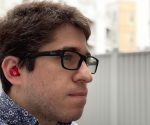Four Things Nigerian Government Must Do Before Relaxing Lockdown In Nigeria By Dr. Ayobami Olufadeji
[ad_1]

Dr Ayobami Olufadeji
We have never experienced a phenomenon similar to COVID-19 in our lifetime. In a matter of weeks, the virus has spread to 210 countries and territories and has rocked global economies in its wake.
To curb the spread of the virus, governments encouraged, and eventually mandated that people remain at home, effectively shutting down productivity. Over the last five weeks, 26.5 million Americans have filed for unemployment.
There are current estimates that this year alone, the pandemic could push about 49 million people into extreme poverty. Five million of these people will come from Nigeria. Already the poverty capital of the world, it would cripple our economy to add this to the 87 million Nigerians that already live on less than $1.90 a day.
The struggle in deciding between adhering to public health recommendations to lock-down and the economic pressures to re-open are not peculiar to Nigeria. This has commonly become known as decision to protect lives or livelihood and many countries have grappled with this decision over the last month. Even within countries, state and federal governments have argued on the right approach.
 Dr Ayobami Olufadeji
Dr Ayobami Olufadeji
A nation’s ability to hold out on re-opening is determined by its social security net for its vulnerable populations. This has been evidenced by the different variations of economic stimulus packages released by countries over the last few weeks. Unfortunately in Nigeria, our ability to absorb shocks to the economy is limited and will only become debilitated in the coming months as the price of oil is expected to continue to drop.
In a viral video last week, a Nigerian told a CNN reporter “I prefer to die by corona virus, than to die by hungry virus.” Even though our government has made an attempt to provide food for our poor, it is clear that there is still an unmet need and inevitably, the balance will tip in favor of re-opening to protect the livelihoods of Nigerians. However, here are 4 things we need to put in place before that time comes.
Expand testing capacity
At the time of this article, we have tested 10,918 samples in Nigeria. While I suspect that this data point does not reflect the number of individuals tested (patients need to provide multiple samples before discharge), even if it did, it would mean that we have only tested 0.0057% of our population. I think it is safe to extrapolate that we do not have a good grasp of the coronavirus burden of disease in Nigeria at this time.
I appreciate that the NCDC has done a lot of work with scaling up our ability to test in Nigeria but we are still only able to run 400 – 600 samples a day. If we were to look to South Korea who have been touted as an example of a country that has managed the pandemic well, we’d need to improve our testing capacity by 25 times to get us up to the 15,000 samples they run a day. This is impressive considering that they have a population that is approximately 25% of ours.
Considering the significant social economic and cultural challenges to adhering to social distancing in our context, mass testing allows us to quickly identify new cases and isolate them so that we can limit the spread of the virus.
Mandate mask wearing
If you’re confused about whether or not people should wear masks, what kind of masks they should wear, how efficacious they are, you’re not alone. There’s a reason why COVID-19 is referred to as the novel coronavirus. Health systems around the world are grappling with all the new information daily and trying to adjust their recommendations.
In order for us to re-open Nigeria, we need to mandate mask wearing for all individuals as a baseline irrespective of symptomatology. A key transmission route of coronavirus is via droplets that come out of mouths and nostrils, not just when we cough or sneeze, but even when we speak. What’s even more concerning about this virus in particular is that we know that people that have no symptoms can carry this virus and infect others. Multiple studies have shown that a substantial number of transmissions may have originated from pre-symptomatic individuals; as high 24 – 44% in these studies out of Shenzen and a multi-site study in Asia. This means that 1 out of 3 people that contract the virus get it from someone who has had no symptoms. Even more worrisome, studies show that 10 – 15% of test results are false negative. This means that 1 in 10 people who have tested negative for COVID-19 actually have the virus and can continue to spread it to others.
Although cloth masks do not do a great job of protecting healthcare workers, they do a good job of preventing egress of particles from the mouth of the wearer. Research has shown that blocking transmission of particles from the sick individuals is much easier, and cloth masks can fulfill that need. People point to South Korea’s extensive testing as one of the reasons they were able to get a hold on the spread of COVID-19. What most people don’t talk about is that as they expanded their testing capacity, they also began to provide a regular supply of masks for all citizens.
The graph below depicts a mathematical model that suggests that if most people wear a mask in public, the transmission rate can fall so much that we could effectively stop the spread of the disease. Source&Source
PPE for Healthcare providers
In the index case in Wuhan, 1300 health care workers became infected with the coronavirus. Their likelihood of infection was more than three times as high as the general population and they had to bring in doctors from elsewhere to help take care of their sick. Then they revamped their approach to PPE , and these methods ensured that no more healthcare workers were infected.
It is important that we provide PPE for our health care providers in Nigeria. With a ratio of 1 physician per 2,600 Nigerians we cannot afford to lose any healthcare workers lest we run the risk of totally crumbling our frail healthcare system.
Fund research
While there is no science to substantiate the many ludicrous claims in early February that black skin was protective against corona virus, there is no question that there will be differences in the way Nigeria is affected compared to other western countries. Our population demographics are significantly different. Data from 2015 shows that the median age of the Nigerian population was 17.9 years. This suggests that most Nigerians have not developed the chronic conditions that have predisposed others to worse outcomes in available data sets around the world. Combine this with a life expectancy of 54 years, it is reasonable to assume that most of our population who have poor health at baseline have unfortunately passed away from other causes. This might explain why we have one of the lower mortality rates globally at 3%, although I am concerned about underreporting (see this story about Kano for example).
What can the 35 deaths (at the time of this writing) teach us about the pattern of mortality in Nigeria? Were the patients on ventilators before they died? How long did it take for them to be placed on ventilators? What was the management for those who could not be placed on ventilators? How many of the patients in the isolation centers have needed supplemental oxygen? Did they need nasal canula or high flow oxygen? Were they able to be weaned off the oxygen? Are there any patient characteristics that have predisposed Nigerians to worse outcomes? How long are patients staying in the hospital before they are discharged? Does hydroxychloroquine work in Nigeria? (current data suggests otherwise). Will proning patients work in Nigeria? (my anecdotal evidence from taking care of these patients suggests that it will)
Will ‘hitting the body with ultraviolet light’ work? (cue 45)
Researchers answer these questions. I have been impressed at our ability to raise money to expand testing, build field hospitals, purchase PPE, and develop a myriad of tech solutions. We need to devote that same energy to research institutions across the country. They give us our best chance at early pattern recognition and developing best practices for our local context in our battle against coronavirus.
A hard decision
It is difficult to predict the right time to re-open Nigeria. World leaders around the world are grappling with this same challenge and some have even described this decision as the most important of their careers. Our inadequate social safety net in Nigeria suggests that we will likely have to open before it is clinically safe to do so. To give our country the fighting chance, we need to put certain measures in place – expand testing, mandate mask wearing, protect our healthcare workforce with PPE, and fund research to identify solutions for our local context.
Dr Ayobami Olufadeji is an emergency physician and Clinical Instructor at Harvard Medical School. He can be reached via ayo.olufadeji@gmail.com
AddThis
:
Featured Image
:

Original Author
:
Dr Ayobami Olufadeji
Disable advertisements
:
[ad_2]
Source link









